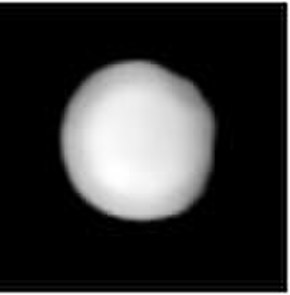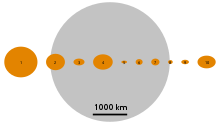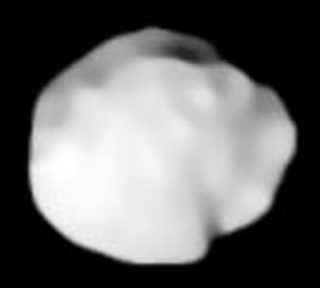
Juno is a large asteroid in the asteroid belt. Juno was the third asteroid discovered, in 1804, by German astronomer Karl Harding. It is one of the twenty largest asteroids and one of the two largest stony (S-type) asteroids, along with 15 Eunomia. It is estimated to contain 1% of the total mass of the asteroid belt.

Astraea is an asteroid in the asteroid belt. This object is orbiting the Sun at a distance of 385 million kilometres (2.5735 AU) with a period of 4.13 yr and an orbital eccentricity of 0.19. The orbital plane is inclined at an angle of 5.37° to the plane of the ecliptic. It is spinning with a period of 16.8 h. The surface of Astraea is highly reflective and its composition is probably a mixture of nickel–iron with silicates of magnesium and iron. It is an S-type asteroid in the Tholen classification system.

Hebe is a large main-belt asteroid, containing around 0.5% of the mass of the belt. However, due to its apparently high bulk density, Hebe does not rank among the top twenty asteroids by volume. This high bulk density suggests an extremely solid body that has not been impacted by collisions, which is not typical of asteroids of its size – they tend to be loosely-bound rubble piles.
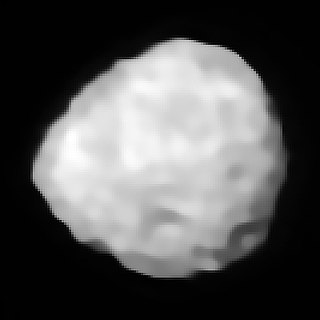
Iris is a large main-belt asteroid and possible remnant planetesimal orbiting the Sun between Mars and Jupiter. It is the fourth-brightest object in the asteroid belt. 7 Iris is classified as an S-type asteroid, meaning that it has a stony composition.
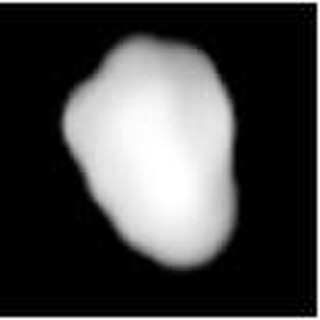
Metis is one of the larger main-belt asteroids. It is composed of silicates and metallic nickel-iron, and may be the core remnant of a large asteroid that was destroyed by an ancient collision. Metis is estimated to contain just under half a percent of the total mass of the asteroid belt.

Parthenope is a large, bright main-belt asteroid.
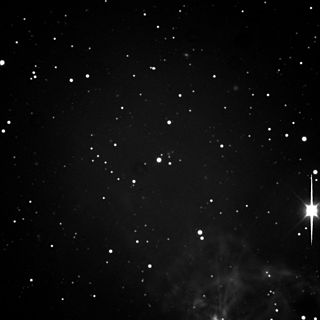
Thetis, minor planet designation 17 Thetis, is a stony asteroid from the inner regions of the asteroid belt, approximately 90 kilometers in diameter. It was discovered on 17 April 1852, by German astronomer Robert Luther at Bilk Observatory in Düsseldorf, Germany who deferred to Friedrich Wilhelm August Argelander the naming his first asteroid discovery after Thetis from Greek mythology. Its historical symbol was a dolphin and a star; it is in the pipeline for Unicode 17.0 as U+1CECA .
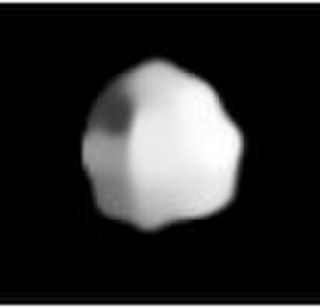
Melpomene is a large, bright main-belt asteroid that was discovered by J. R. Hind on 24 June 1852, and named after Melpomenē, the Muse of tragedy in Greek mythology. Its historical symbol was a dagger over a star; it is in the pipeline for Unicode 17.0 as U+1CECB .
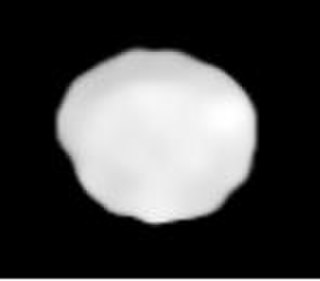
Fortuna is one of the largest main-belt asteroids. It has a composition similar to 1 Ceres: a darkly colored surface that is heavily space-weathered with the composition of primitive organic compounds, including tholins.

Bellona is a large main-belt asteroid. It was discovered by German astronomer R. Luther on March 1, 1854, and named after Bellōna, the Roman goddess of war; the name was chosen to mark the beginning of the Crimean War. Its historical symbol was Bellona's whip and spear; it is in the pipeline for Unicode 17.0 as U+1CECE .

Amphitrite is one of the largest S-type asteroids, approximately 200 kilometers in diameter, and probably fifth largest after Eunomia, Juno, Iris and Herculina.
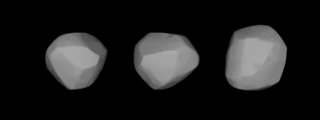
Lucina is a main-belt asteroid that was discovered by Alphonse Borrelly on June 8, 1875, and named after Lucina, the Roman goddess of childbirth. It is large, dark and has a carbonaceous composition. The spectra of the asteroid displays evidence of aqueous alteration.

Atala is a large main belt asteroid that was discovered by brothers Paul Henry and Prosper Henry on 2 November 1875, but the discovery was credited to Paul. It is a type D asteroid, meaning that it is composed of carbon, organic rich silicates and possibly water ice.
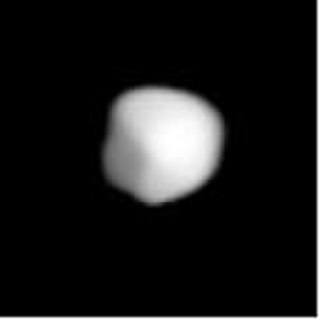
Athamantis is a fairly large main-belt asteroid that was discovered by the German-Austrian astronomer K. de Ball on September 3, 1882, in Bothkamp. It was his only asteroid discovery. The asteroid was named after Athamantis, daughter of Athamas the mythical Greek king of Orchomenus.
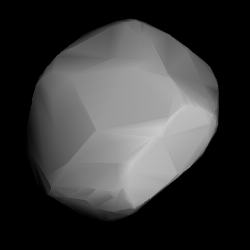
Hypatia is a very large main-belt asteroid that was discovered by Russian astronomer Viktor Knorre on July 1, 1884, in Berlin. It was the third of his four asteroid discoveries. The name was given in honour of philosopher Hypatia of Alexandria. Based upon the spectrum, it is classified as a C-type asteroid and is probably composed of primitive carbonaceous material. Like many asteroids of this type, its surface is very dark in colour.

Lameia is a typical main belt asteroid. It was discovered by Austrian astronomer Johann Palisa on 5 June 1885 in Vienna and was named after the Lamia, a lover of Zeus in Ancient Greek mythology. 248 Lameia is orbiting the Sun with a period of 3.88 years and a low eccentricity (ovalness) of 0.067. The semimajor axis of 2.47 AU is slightly inward from the 3:1 Kirkwood Gap. Its orbital plane is inclined by 4° to the plane of the ecliptic.

Myrrha is a main-belt asteroid that was discovered by the French astronomer Auguste Charlois on January 10, 1894, in Nice. It has been classified as a C-type asteroid and is most likely composed of carbonaceous material.
Chloris is a very large main-belt asteroid that was discovered by Auguste Charlois on January 7, 1896, in Nice. It is classified as a C-type asteroid and is probably composed of primitive carbonaceous material. The spectrum of the asteroid displays evidence of aqueous alteration. It is the namesake of the Chloris family of asteroids.
618 Elfriede is a minor planet orbiting the Sun. On July 24, 2013, it occulted the magnitude 12.8 star 2UCAC 23949304, over parts of Mexico and southwestern United States.
3703 Volkonskaya, provisional designation 1978 PU3, is a Vestian asteroid and asynchronous binary system from the inner regions of the asteroid belt, approximately 4 kilometers (2.5 miles) in diameter. It was discovered on 9 August 1978, by Soviet astronomers Lyudmila Chernykh and Nikolai Chernykh at the Crimean Astrophysical Observatory in Nauchnij, on the Crimean peninsula. It was named by the discoverers after the Russian princess Mariya Volkonskaya. The V-type asteroid has a rotation period of 3.2 hours. The discovery of its 1.4-kilometer minor-planet moon was announced in December 2005.
